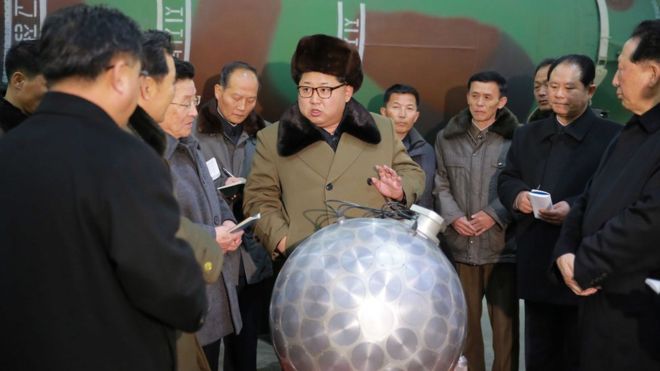North Korea Nuclear Test: South Retaliates, Trump Tweets
THE CITIZEN BUREAU

NEW DELHI: Tensions escalate as South Korea responded to Sunday’s nuclear test by North Korea with a massive show of military force and moves to strengthen its ability to counter potential military strikes from Pyongyang.
The army and air force drills were held at an undisclosed location on Monday morning, and involved the launch of ballistic missiles meant to simulate a strike against North Korea’s Punggye-ri nuclear test site. The drills come after Pyongyang tested a powerful Hydrogen bomb that can be loaded onto an intercontinental ballistic missile on Sunday, gravely escalating tensions in the region and levelling pressure on United States President Donald Trump to diffuse the nuclear crisis.
North Korea made the announcement of the test on State TV, saying it was a “complete success” and involved a “two-stage thermonuclear weapon” with “unprecedented” strength. The explosion caused by the test prompted a 6.3-magnitude earthquake about 10 km from North Korea’s Punggye-ri nuclear, which was felt as far as across the border in China’s Yanji.
South Korea estimated the test to be five to six times stronger than North Korea’s fifth test in September last year, with the blast yield at between 50 to 60 kilotons. South Korea responded to the test with massive drills, with more joint exercises with the United States planned.
Seoul seems to be hardening its stance toward Pyongyang, as President Moon Jae-in’s government is reported to have approved additional deployments of a controversial US missile defence system known as Thaad. The terminal high-altitude area defence system had initially been opposed by Moon, after being cleared by his conservative predecessor, Park Geun-hye.
Following tensions with Pyongyang, with the nuclear test being the latest trigger, Moon seems to have dropped his objections. The first two Thaad batteries were operationalised in Seongju in late April amid widespread protests. Thaad had a major impact on the May presidential elections on South Korea, with Moon’s win in part connected to the liberals opposition of it. As such, the deployment of a further four batteries was suspended pending the outcome of an environmental impact assessment. Following the crisis this weekend, South Korea’s Yonhap news agency said the environment ministry had given its “conditional consent” to the installation of additional Thaad batteries.
As tensions escalate, all eyes are on US President Donald Trump. Sunday’s test is the first nuclear test since Trump took over, and provides all indication that North Korea is moving dangerously close to developing a nuclear warhead capable of being fitted onto an ICBM that can potentially strike the US mainland. Further, Hydrogen bombs are far more powerful than the atomic bombs North Korea has tested thus far -- with Sunday’s test marking a major advancement in the country’s nuclear capability.
Trump, however, chose to respond to the clear threat with a series of misdirected tweets. For one, he took a jab not at North Korea but US ally and America’s closest partner in confronting the crisis: South Korea.
The tweet accused Seoul of “appeasement” -- with Trump clearly venting his frustration at the new liberal government which has been resistant to Trump’s demand for an overhaul of trade practices that he views as cheating American workers and companies.
Trump also took a shot at China, saying that North Korea was an “embarrassment” to Beijing.
A series of tweets were directed at North Korea.
The tweets represent a dual strategy, as Trump used security concerns to hit out at both China and South Korea for trade practices. The strategy, however, may backfire. “In a circumstance where we’re going to need close cooperation with not only South Korea but China as well, he’s coming out swinging at all of them rather than trying to build support and coordination,” Ely Ratner, a top national security official in the Obama administration told the New York Times. “It just looks so haphazard.” Others, however, have said that Trump needs to level pressure on adversaries and allies alike given the scale of the crisis.
Meanwhile, US defence secretary James Mattis threatened a “massive military response” if North Korea threatened the US or any of its allies. “Any threat to the United States or its territories, including Guam or our allies, will be met with a massive military response, a response both effective and overwhelming,” Mattis said after meeting Donald Trump and his national security team. “We are not looking to the total annihilation of a country, namely North Korea. But as I said, we have many options to do so,” he added.



